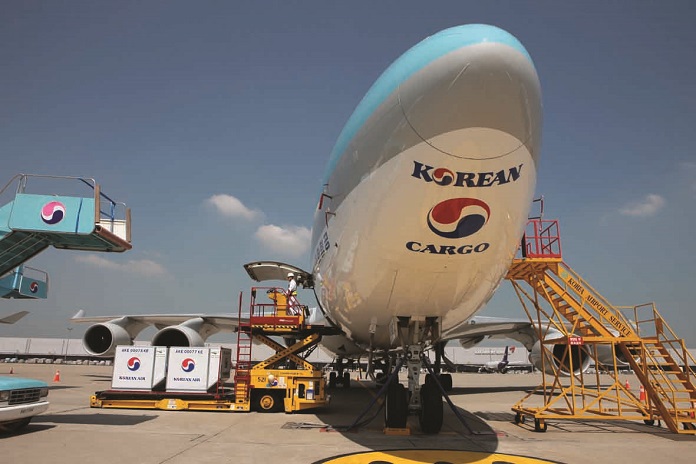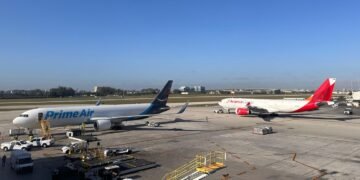Korean Air has become the latest carrier to offer up its passenger aircraft for cargo-only operations, joining Scoot and Cathay Pacific.
The airline said it planned to deploy passenger aircraft that have been idled since February 25 to carry cargo on flights to Qingdao.
The flights will begin on March 21 and it hopes to add new destinations to the operation in the near future.
Parent company Hanjin Group’s chairman, Walter Cho, said that using passenger aircraft would help “overcome the current crisis, as this would cut down expenses and support import and export companies”.
Cho said: “As the Covid-19 situation becomes increasingly dire, it is important for us to take a new perspective when looking at the market. “If we use the cargo compartment of our parked passenger aircraft, not only can we respond to the changing demand of cargo transport by diversifying our cargo routes, but we can also reduce aircraft parking fees.” He added: “The business strategies of passenger and cargo should be shifted as the trans-Atlantic [air routes are] now blocked. We must flexibly respond to market demand.”
A Boeing 777-300ER passenger aircraft can carry approximately 22 tons of cargo in cargo belly space. With the removal of passenger seats in the cabin (42 prestige seats, 227 economy seats), the converted aircraft can load additional 10.8 tons of cargo.
Modification of the aircraft to load cargo in the cabin requires a high level of technical review and competency. It’s not just about taking out passenger seats, but also about removing complicated in-flight electrical wiring and installing standardized locks on the floor to keep cargo secured.
Korean Air has been flexibly responding to meet market cargo demand by actively using the belly space of its grounded passenger aircraft such as Boeing 777-300, Boeing 787-9 and Airbus 330-300. From April to September 2020, an average of 420 cargo-only flights a month were operated on passenger aircraft, with the average monthly transport volume reaching 12,000 tons.







